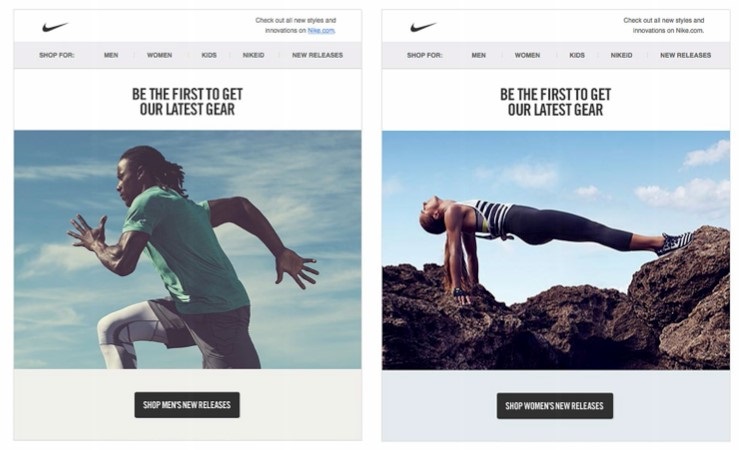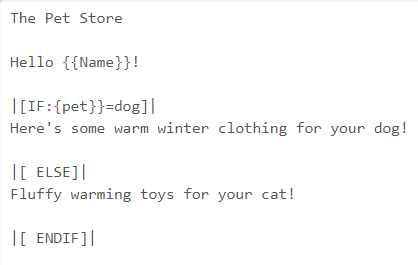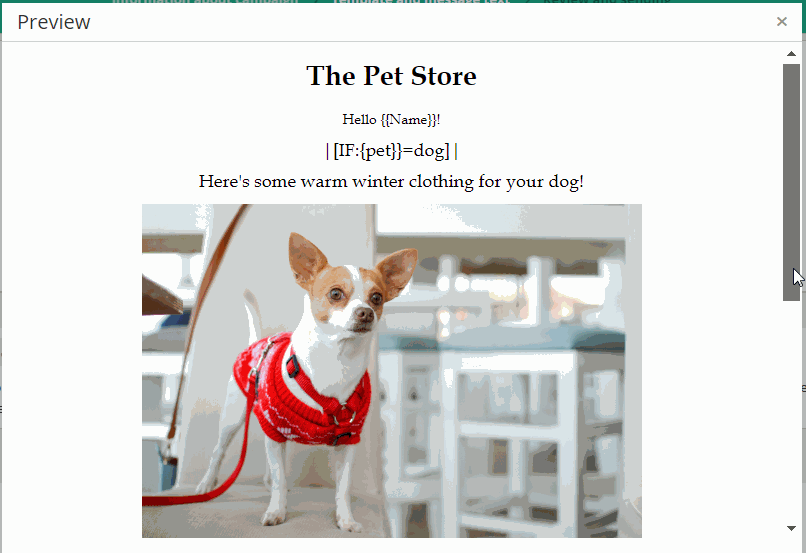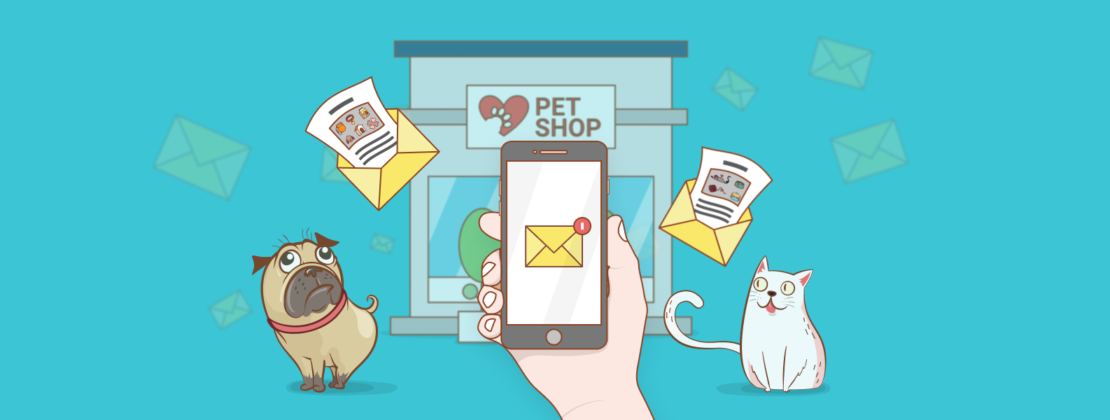The era of a one-size-fits-all approach to marketing is fading away as fast as the concept of personalization is evolving. Now marketers can use more advanced techniques to acquire, retain and please their customers with tailor-made offers and information. In this article, we’ll explain one of such techniques, dynamic email content, and give essential tips on how to use it in your marketing campaigns.
Content:
What dynamic email content is and how it works
A study from The University of Texas showed that in today’s media environment people tend to prefer more personalized experiences due to their desire for control and information overload. Every day users need to tackle the excessive amount of data coming from millions of content creators and internet companies. Personalization, in its turn, provides people with the feeling of being in control: they receive content which is more or less relevant to their needs and desires without being overwhelmed by irrelevant information.
Dynamic content, also called “smart,” “adaptive,” or “real-time” content, helps marketers automatically provide customers with personalized information based on data such as time, location, interests, and preferences of each subscriber. In email marketing, dynamic content lets you adjust blocks of text and images according to the predetermined values.
In addition to saving a lot of time thanks to the automated process of email creation, dynamic content allows email marketers to build stronger relationships with the audience, raise customer loyalty, grow brand ambassadors and, as a result, reach higher ROI than ever. The facts speak for themselves: 58% of all revenue is driven by personalized emails.
Dynamic email content vs. list segmentation
You may say, segmentation also leads to deeper personalization, so what’s the difference between dynamic content and segmentation? Let’s clarify both terms to better understand how dynamic email content differs from segmentation, and how they are intertwined.
Mailing list segmentation allows you to group your audience by different criteria. But when it comes to email creation, you need to craft different templates with various content made for each segment. Eventually, it takes an enormous amount of time, resources, and efforts to complete the task and send out a personalized email campaign.
Dynamic content, for its part, makes email marketers more agile: you can send out a single email to all your subscribers, but the content in it will automatically adapt to the segments you’ve identified. In short, you can use the predetermined segments to create dynamic content for better personalization. Thus, list segmentation is rather the necessary condition for the dynamic email content.
Creating a dynamic email
We’ve prepared a list of actions you can take to implement dynamic content in email marketing.
Determine your segments
Start off by building clear segments based on the following customer data:
- Name, gender, and birth date;
- Location;
- Family status, kids;
- Job title, industry;
- Financial status;
- Personal preferences and settings;
- Previous purchases;
- Customer lifecycle;
- Behavior on your previous emails, website, and so on.
If you don’t have enough information, motivate users to fill up their personal profiles or hold surveys and fun tests to learn more about your audience. Keep updating that data to make sure your emails are always relevant.
Define the email elements which should be dynamic
From a technical side, there are two types of dynamic content:
- Variable substitution lets you choose the content that will be changed according to the recipient’s personal data once they open the email. For instance, it can be a name of a user or their location.
- Content insertion gives you more options for a deeper personalization such as changing entire paragraphs and images or even creating emails in multiple languages.
Define which parts of the email should be dynamic. For example, if you own a pet store, you can address dog lovers and cat lovers separately offering them relevant products. For that, you can change the image in the header of your email and a paragraph which presents the offer.
Take a look at the example from Nike: they’ve placed a dynamic image in email and text on the CTA button to send out different offers to men and women.

Create a dynamic email copy
After segmenting your mailing list and defining dynamic elements, create an email using either variables or dynamic content syntax.
Subscriber variable data looks like a code that you insert in an email body to command which value should be displayed. For example, a variable {{firstname}} will place the first name of your subscribers wherever you put it, provided that name exists in the email service database.
Dynamic content syntax lets you play with more complicated values, thus creating more personalized emails. Let’s take the pet store example discussed above. You might code the email for it in the following way:

As you can see, you use this algorithm to tell the email service provider (ESP) which actions to take and what content to include in an email.
Here’s how the preview of such code would look like:

Every recipient who has a dog will receive an email promoting dog clothing, whereas every user with a cat will get an offer with cat toys.
Ready-to-use dynamic email content scenarios
The number of dynamic content scenarios is limited only to your imagination. Yet, keep in mind that for various purposes, you will need to create a separate dynamic email template and set up different metrics to track. Why? First of all, it’s important to keep users engaged and interested by sending out unique emails every time. As for the metrics, they should serve as a reflection of your goals, which may change from campaign to campaign.
Here is a list of insights for your dynamic content which could improve your email marketing:
- Time-sensitive offers with a countdown timer and a bold call-to-action create a sense of urgency and motivate users to make a purchase right now.
- FOMO emails, by offering items limited in stock, trigger the feeling that a user might miss out on something important or valuable and motivate the latter to take action.
- Dynamic location-sensitive emails show that you care about your audience by offering to visit one of your stores which is the closest to them.
- Emails based on previous purchases can bring you more profit by promoting items relevant to each user based on the amount of money they spend and the products they buy.
- Cross-selling emails can significantly raise your sales by offering to complement users’ previous purchases with additional products.
- Language-based emails vary for every user depending on their browser language or the information about the language they use provided to you and can have a positive effect on user engagement.
- Weather-based emails help you build stronger relationships with users and promote relevant clothing items, remind to take their umbrellas, or offer to visit your restaurant and try out hot beverages.
- Emails based on the favorite items which users “liked” on your website can bring you more sales as you offer exactly what users want to get.
- Device targeted emails offer to interact with your company in a more convenient way as subscribers download your app on iOS, Android or Windows depending on the device they use to open your emails.
Wrapping up
You don’t need too much to master dynamic content in your email marketing campaigns. Just follow these three recommendations:
- Keep your customer data fresh and never stop updating and improving user segments;
- Come up with new dynamic email content ideas as you go: the behaviour of your subscribers is a great source of inspiration;
- Constantly check your metrics to learn how well you are doing and what areas should be improved.
We wish you good luck, high conversions, and more loyal customers! To make that possible with email, try out the SendPulse email marketing service for free.






